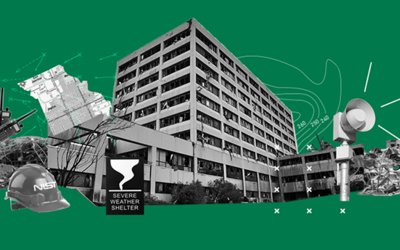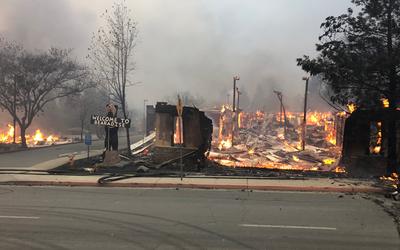Buildings, bridges, and other structures are not supposed to fall down. But sometimes they do, and for different reasons: fires, earthquakes, high winds, errors in design and construction, flaws in materials, and even terrorist attacks.
When disaster and failure events cause, or pose the potential for, substantial loss of life, the NIST Disaster and Failure Studies Program provides a platform for research into building and infrastructure performance and emergency response and evacuation procedures.
Since 1969, NIST has studied more than 40 earthquakes, hurricanes, tornadoes, building and construction failures, and fires — all with the aim of identifying improvements that could be made to building and fire codes, standards and practices. Each study or investigation leads to actionable findings and reccomendations that make communities safer.
Congress gave NIST the authority to conduct these types of studies and investigations through the National Construction Safety Team (NCST) Act, National Earthquake Hazards Reduction Program (NEHRP), National Windstorm Impact Reduction Program (NWIRP), and NIST Organic Act.
Wildfires are no longer just a California problem or a forest problem. Within the past eight years, Tennessee, California, Oregon, Colorado, New Mexico, and Hawaii have all experienced their most destructive wildland-urban interface (WUI) fires on record, destroying infrastructure and thousands of homes and businesses, and causing devastating loss of life.
Why NIST?
- Unique expertise: NIST staff members have measurement science and standards expertise in a range of technical areas that are needed to understand why engineered structures or systems fail. These include materials science, engineering, emergency response and communications, fire science, chemistry, physics, social science and more.
- Collaboration: NIST collaborates with universities, companies, industry organizations, federal agencies and local authorities around the country, as necessary, to broaden the available expertise for a given study or investigation. For example, more than 200 professionals and subject matter experts participated in the World Trade Center collapse investigation. And to date, NIST has awarded more than a dozen contracts and worked with more than 15 federal and local agencies for the Champlain Towers South investigation.
The Impact
Studies and investigations conducted by NIST have led to significant improvements to building and fire codes, standards, and practices to enhance the health and safety of the American public. One of the first major impacts of this work was the passage of the Hotel-Motel Sprinkler Act in 1990, as a direct result of NIST’s study of the Dupont Plaza Hotel Fire in Puerto Rico. Other outcomes include:
- World Trade Center: 40 changes were adopted into the International Building Code and the International Fire Code based on NIST’s recommendations. These changes included improving the fire resistance of the building frame, increasing the size of exit stairways, and reinforcing sprinkler systems. In addition, NIST’s recommendations resulted in the development of a new American Society of Civil Engineers standard focused on designing structures that resist “disproportionate collapse.”
- Station Nightclub Fire: NIST worked with the National Fire Protection Association to change building and fire codes to require sprinklers in more types of buildings — including nightclubs — and update festival seating and crowd management requirements, as well as record-keeping of the inspection of emergency exits.
- Joplin Tornado: NIST conducted the fundamental research to map tornado windspeeds across the U.S. Using that research, NIST helped develop
the first building codes to protect against threats from tornadoes. - California Camp Fire: NIST refined the idea of “temporary refuge areas” and provided guidance on how they could be included in wildfire evacuation plans. This guidance has been implemented in 30 communities across California and is gaining traction across the United States. NIST’s study also led to changes to the California Fire Code and the creation of the Hazard Mitigation Methodology (HMM), a community-wide approach toward safeguarding residences and helping prevent fires from spreading.
Download a PDF about NIST's disaster and failure studies work.












